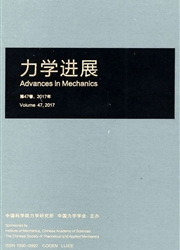

 中文摘要:
中文摘要:
在大坝渗流与控制、各种水工隧洞和交通隧道以及地下各种洞室开挖、采矿工程与油藏开采中的水力劈裂、岩坡和坝基的稳定性研究等领域中经常会遇到岩体的饱和渗流力耦合问题.本文对这些领域中的渗流应力耦合问题分为6种力学模型:等效连续介质模型、裂隙网络模型、双重介质模型、断裂力学模型、连续损伤力学模型和统计模型.前3种主要从经典的黏弹塑性本构着手考虑,着重对渗流场的处理,后3种则是从考虑岩体在耦合作用下发生损伤破裂行为方面切入,着重于岩体结构内部发生质的改变带来的更加复杂的耦合效应.对这些模型进行了详细的介绍,指出了这些模型的优缺点与适用范同,给出了一些有代表性的研究成果,并对该研究领域中未来的研究方向进行了展望.
 英文摘要:
英文摘要:
The saturated seepage-stress coupling problems in rock mass are often encountered in the field of seepage flows occurring in the dam and its control, stability analysis of hydraulic tunnels, traffic tunnels, underground caverns, rock slopes, dam foundations and mining engineering and hydraulic fracturing in reservoir. The purpose of this review is to present and classify the mechanical models often applied to seepage-stress coupling problems in these fields of rock mass: equivalent continuum model, fracture network model, doublemedium model, fracture mechanics model, continuous damage mechanics model and statistical model. The first three models focus mainly on dealing with the seepage field by means of classical rock mechanics, and the rest models pay more attentions on failure damage of the intact rocks with coupling effect. Then the merits and drawbacks of these models were pointed out and some outstanding results from each model were also summarized. Finally, suggestions for further improvement were put forward.
 同期刊论文项目
同期刊论文项目
 同项目期刊论文
同项目期刊论文
 期刊信息
期刊信息
